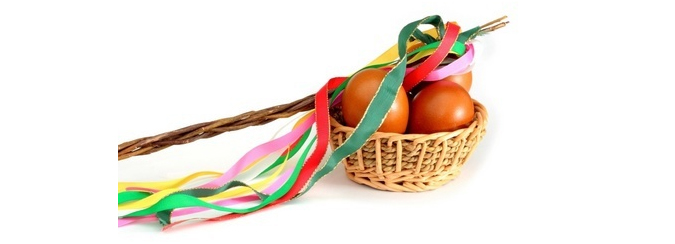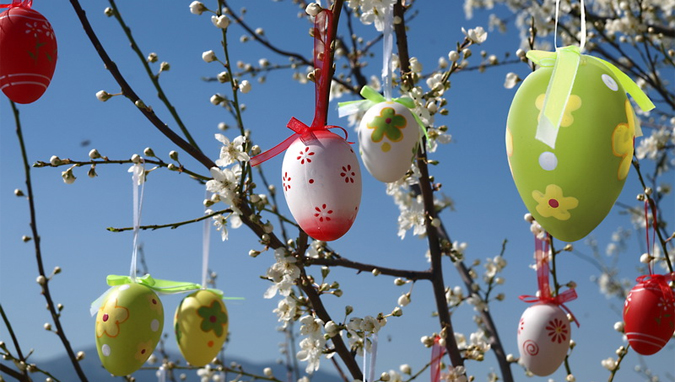Whip your Czech into shape with My Language Adventure! During 12 unforgettable modules you will be able not only to manage the language, but also to become familiar with the socio-cultural environment of the Czech Republic – through texts, during workshops and individual lessons.
Ahoj Pavle! – Hey Pavel.
Nazdar! – Hey! Another possibility how to greet a friend
Hádej, co mám! – Guess what I have!
No to nevím, co máš? – Well I don’t know, what do you have? – In informal oral conversation, Czechs sometimes use “no” in the beginning of the sentence.
Mám bič! – I have a whip!
Bič? Na co bič? – A whip? What for? – In Czech it isn’t necessary to use this verb in a question like this.
Na ženu! – For a woman!
Jo ty jsi byl v sexshopu! – Yeah, you’ve been in a sexshop!
Ne, mám Easter bič, Velikonoce, you stupid! – No, I have the Easter whip, Easter, you stupid!
Jo, pomlázka! – Yeah, pomlázka!

Pomlázka
There are many traditions during the year in the Czech Republic, let’s have a look at Velikonoce now!
Velikonoce is a holiday that is both religious and pagan, and Czechs enjoy both aspects! Many of us don’t eat meat on Velký pátek(Great Friday) and some of us don’t do the laundry on Bílá sobota (White Saturday). But we all decorate our homes with Easter symbols!
The Easter symbols are mostly related to spring and the beginning of new life. Everything is full of colours, funny, fresh and also tasty! Even the days before Velikonoční pondělí(Easter Monday) are full of colours – Zelený čtvrtek(Green Thursday) and Bílá sobota(White Saturday).
Boys and men braide a willow pomlázka and decorate it with colourful ribbons. The word Pomlázka comes from an old Czech verb pomladit (make younger). It means that all the girls and women should be symbolically whipped on Easter Monday to be healthy and young. While whipping girls and women, boys and men usually say a carol.
Girls and women then give kraslice (hand-decorated eggs) to them. There are many Easter egg decorating techniques and different materials can be used – such as bee’s wax, watercolors, onion peels, straw, picture stickers etc.

Kraslice
As the spring is related to new life, you can find many baby animals among the Easter symbols. Žluté kuřátko (yellow small chick), pečený beránek (baked lamb) – no matter if real or gingerbread, zajíčci(bunny rabbits) etc.
Some phrases to consider so that you are not lost at Easter:
Veselé Velikonoce! – Happy Easter!
Pomlázka – Easter whip, easter stick
Velikonoční vajíčko, kraslice – Easter egg
Velikonoční beránek – Easter lamb
Pondělí velikonoční – Easter Monday
Easter carol:
“Hody hody doprovody, dejte vejce malovaný,
nedáte-li malovaný, dejte aspoň bílý,
slepička vám snese jiný.”
The sixth module of Czech for foreigners is called Traditions and Folklore and you will learn a lot about Czech traditions. You will also learn the various past tenses of selected verbs as well as the genitive case.
Three sentences from the Traditions and Folklore module:
Báro, já úplně zapomněla, že jsi měla svátek! Bára, I totally forgot that you had a name day!
Barbora je hodně upovídaná, ale tohle už je příliš. Barbora is very talkative, but this is just too much.
Naposledy tu byly před rokem, pár dní před Vánoci. The last time they were here was a year ago, a couple of days before Christmas.
To find out more about My Language Adventure click here.
Note: Video produced by Prague Camera.
Other episodes in this series:
Episode 1 – Traditions
Episode 2 – New Identity
Episode 3 – Beer Lover
Episode 4 – Chef
Episode 5 – Archery
Episode 6 – Jít/Jet
Episode 7 – Super Learning
Episode 8 – Memory Training












 Reading time: 3 minutes
Reading time: 3 minutes 



















